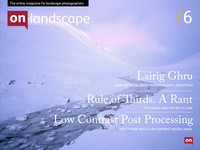Master photographer

Tim Parkin
Tim Parkin is a British landscape photographer, writer, and editor best known as the co-founder of On Landscape magazine, where he explores the art and practice of photographing the natural world. His work is thoughtful and carefully crafted, often focusing on subtle details and quiet moments in the landscape rather than dramatic vistas. Alongside his photography and writing, he co-founded the Natural Landscape Photography Awards, serves as a judge for other international competitions. Through all these projects, Parkin has become a respected and influential voice in contemporary landscape photography.

Joe Cornish
Professional landscape photographer.
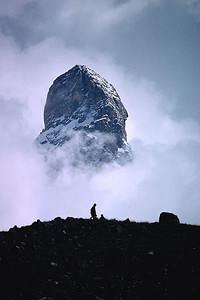 Introduction by Joe Cornish
Introduction by Joe Cornish
Had he lived, Galen Rowell would by now be 70 years old. That his name still resonates down the years says much for the power of his art. I still remember finding Mountain Light at Stanfords, Covent Garden, on a grey London day in 1986. The colour and compositional invention and energy compelled me to buy, even though £25 was a lot of money for me. Twenty five years ago! I was lucky if I made £100 a week then. I read the text, every word. Several times (I made sure I had my moneys-worth). Along with David Muench's Nature's America, Mountain Light was my main inspirational, practical and conceptual resource for many years after.
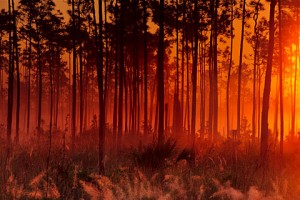 Revisiting the text recently was fascinating. Photography has gone through a technical revolution. As if anticipating what was to come, Galen wrote, "Thoughtful photographers have become aware that photographic styles which depend on quirks of present chemical technology instead of on consistent personal vision will become passé. Only those based on the qualities of light and form will remain equally valid in whatever new technologies evolve." I certainly worked for years in a way that owed much to this philosophy. My 2002 book, First Light is inspired at least in part by Mountain Light.
Revisiting the text recently was fascinating. Photography has gone through a technical revolution. As if anticipating what was to come, Galen wrote, "Thoughtful photographers have become aware that photographic styles which depend on quirks of present chemical technology instead of on consistent personal vision will become passé. Only those based on the qualities of light and form will remain equally valid in whatever new technologies evolve." I certainly worked for years in a way that owed much to this philosophy. My 2002 book, First Light is inspired at least in part by Mountain Light.
Some of the changes the revolution has brought does mean that the reproduction quality of Galen's work has been eclipsed. Those who have seen large prints at his Bishop (California) gallery will understand what I mean. Even the double-page spreads in his books look over-enlarged (by our newly-elevated expectations). His devotion to the 35mm camera served him well in almost every respect, but in terms of ultimate photographic quality the images are inevitably limited by the colour films and lenses of the day.
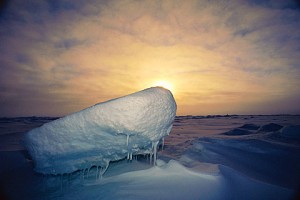 He was a world-class climber and mountaineer, and such an extraordinarily communicative writer one can argue that photography was really the third of his talents. If so, that makes him a true polymath, a contemporary Leonardo da Vinci. But even if he was a better mountaineer and writer, consider the images he made! In my edition of Mountain Light an introductory plate shows his friend Ron Kauk free-soloing (climbing without any protection) beside Yosemite Falls, perhaps a 2000feet vertical drop immediately below. Where was Galen? Twenty metres to the left. Even with protection (rope/harness etc), this is a position only accessible to the rock-climbing elite. He used his athleticism and strength to create photographs most of us could only dream of, by dashing across open landscape to position a rainbow (Potala Palace) or by running uphill to 'unset the sunset', one of his favourite techniques. Curiosity and intellect mean there is a sound practical and scientific basis for most of his methods. My personal understanding of how rainbows 'work' came from reading Mountain Light, as did my knowledge of the Alpenglow and various other lighting and weather-related effects.
He was a world-class climber and mountaineer, and such an extraordinarily communicative writer one can argue that photography was really the third of his talents. If so, that makes him a true polymath, a contemporary Leonardo da Vinci. But even if he was a better mountaineer and writer, consider the images he made! In my edition of Mountain Light an introductory plate shows his friend Ron Kauk free-soloing (climbing without any protection) beside Yosemite Falls, perhaps a 2000feet vertical drop immediately below. Where was Galen? Twenty metres to the left. Even with protection (rope/harness etc), this is a position only accessible to the rock-climbing elite. He used his athleticism and strength to create photographs most of us could only dream of, by dashing across open landscape to position a rainbow (Potala Palace) or by running uphill to 'unset the sunset', one of his favourite techniques. Curiosity and intellect mean there is a sound practical and scientific basis for most of his methods. My personal understanding of how rainbows 'work' came from reading Mountain Light, as did my knowledge of the Alpenglow and various other lighting and weather-related effects.
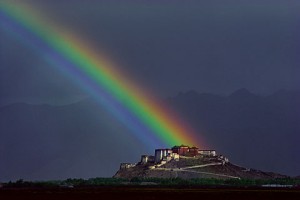 When he died in 2002 shock waves reverberated through landscape and mountaineering photography circles. Although he had lived more than his share of lifetimes, all who knew him felt that his fitness and good health meant he would continue to be an innovative and influential photographer for years to come. As digital slrs have improved over the last decade I have frequently speculated on the images that Galen Rowell might have made with them; with the great image quality now available 'handheld' I am sure his trademark style would have had a huge shot in the arm, and inspired him to new heights. In spite of digital, his books remain, both words and pictures, recommended reading.
When he died in 2002 shock waves reverberated through landscape and mountaineering photography circles. Although he had lived more than his share of lifetimes, all who knew him felt that his fitness and good health meant he would continue to be an innovative and influential photographer for years to come. As digital slrs have improved over the last decade I have frequently speculated on the images that Galen Rowell might have made with them; with the great image quality now available 'handheld' I am sure his trademark style would have had a huge shot in the arm, and inspired him to new heights. In spite of digital, his books remain, both words and pictures, recommended reading.
-- Joe Cornish
Galen Rowell
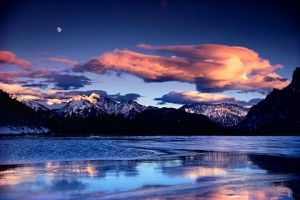 Galen Rowell was the iconic adventure photographer. A world class mountaineer, a hot-rodder, a photographer and a writer - for his 62 years he lived more than just a single life. Hopefully I’ll be able to do it justice in this short summary of his photographic life.
Galen Rowell was the iconic adventure photographer. A world class mountaineer, a hot-rodder, a photographer and a writer - for his 62 years he lived more than just a single life. Hopefully I’ll be able to do it justice in this short summary of his photographic life.
Born in 1940, Galen had an intellectual upbringing, his father a professor of speech and philosophy and his mother a concert cellist, both of whom were members of the Sierra Club (John Muir’s environmental movement in the US). They would spend much of their spare time hiking in Yosemite with prominent environmental heavyweights. Galen climbed from the age of ten and worked up to roped climbs of Yosemite cliffs at 16 years old (his mother was an experienced climber also).
But instead of picking up his parents ‘eco aware’ lifestyle, Galen became a climbing ‘dropout’, spending his time with college dropout friends . He started a ‘hot rod’ business after working in a gas station for a year (ok, a small car repair shop that funded his trips to Yosemite and the car to manage the runs and back roads). By his late twenties, during the golden years of rock climbing in the US, he had many first climbs under his belt. It was during this period, at age 22, that he started to document his climbing with a Kodak Instamatic 500 ; not his first camera, that was a Brownie, won for selling newspaper subscriptions when he was 12. Interestingly most of his early climbing pictures were taken on this Instamatic. He is on record as saying that it rivalled his Nikkormat for quality and that he liked the square picture format (26mm x 26mm on a fixed Schneider Xenar 38mm f/2.8 lens).
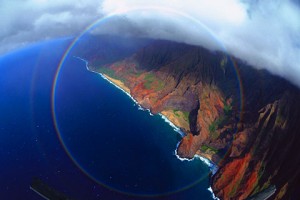 For those first 10 years of his photographic life, Galen shot pictures of his climbing activities. He upgraded to a Nikkormat FTN in 1968, though he was disappointed to find that even though it was the “professionals’ choice”, it didn’t make his photography any better.
For those first 10 years of his photographic life, Galen shot pictures of his climbing activities. He upgraded to a Nikkormat FTN in 1968, though he was disappointed to find that even though it was the “professionals’ choice”, it didn’t make his photography any better.
Some of his early ‘landscape’ photographs were made with the Instamatic camera (I can’t find any landscape pictures earlier than 1968 - you can tell if they are earlier as they will be square). It seems obvious in hindsight that the purchase of the Nikkormat coincided with an urge to make money out of photography. Despite many rejections in the next four years, he decided to pursue a career as a full time photographer in 1972.
The next six years were to be incredibly busy and productive for Galen, even for the workaholic that he was known to be. The big break came when a photographer friend asked him to help with a National Geographic article on Yosemite valley by covering the climbing scene. When the original photographer was called away on another assignment, Galen shot the work anyway and landed himself a front cover article dedicated to the first free ascent of a Half Dome route (free meaning ‘without ropes’).
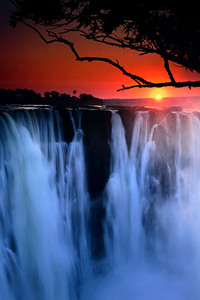 In those six years he went on seven international expeditions, including to China, Patagonia, Nepal and Tibet and produced his incredible “In the Throne of the Mountain Gods” book. However, the Sierra Nevada was his soul, his anvil of creation. The photographs he produced there are those that show his approach to photography and his philosophy.
In those six years he went on seven international expeditions, including to China, Patagonia, Nepal and Tibet and produced his incredible “In the Throne of the Mountain Gods” book. However, the Sierra Nevada was his soul, his anvil of creation. The photographs he produced there are those that show his approach to photography and his philosophy.
Galen’s photography was mostly about the extraordinary. It was only in the last few years of his life that he really immersed himself in capturing the subtle side of the Sierras. Amazing light, stunning mountains, beautiful fields of flowers, rainbows, sundogs, lenticular clouds and of course those mind blowing ‘graduate filtered’ sunrises and sunsets. These are the moments that Galen looked for and captured, moments that raise the pulse in a similar way to his climbing. He mentioned a few times that the ‘meditative’ nature of climbing was similar to the meditative nature of photography, in the way that both climber and photographer enter a ‘zone’ where time slows and senses are heightened. However he was well known for moving fast when he needed to, famously running for over a mile at 12,000 feet to line up a rainbow with the Dalai Lama's palace and, as joe has mentioned, repeatedly running uphill to get another sunset shot.
The visual extremes were often questioned for veracity. An image of a rainbow ending in the Potala Palace in Lhasa, Tibet was so extraordinary that people often walked past it, thinking it an obvious fake (nothing changes). This is probably why Galen wrote so much about the morals of the photographer and how ‘reality’ should not be distorted through the use of filters. Although his justification for the polariser is a bit much - saying it simulated how the eye saw things. He did, however, single handedly popularise the use of the graduated filter though, working with Singh Ray to develop a range of adjustable, neutral filters that became commonplace items in most photographers kits.
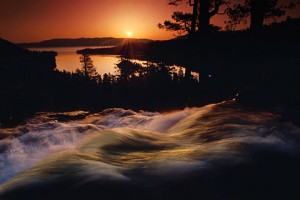 It was probably his writing that made Galen so many fans and it is still his compilation books that so many modern photographers refer to. Galen wrote about every aspect of photography from the business to the philosophy, from technical to moral. Although much of it has become dated (Kodachrome officially died last week, for instance, although a 75 year lifetime is pretty damned good!) most is still as relevant today as it was then.
It was probably his writing that made Galen so many fans and it is still his compilation books that so many modern photographers refer to. Galen wrote about every aspect of photography from the business to the philosophy, from technical to moral. Although much of it has become dated (Kodachrome officially died last week, for instance, although a 75 year lifetime is pretty damned good!) most is still as relevant today as it was then.
Galen and his wife, Barbara, died when he was 62 years old (2002). Returning from a trip by plane, their pilot crashed near to the runway, killing all on board. The fact that Galen risked so much and died from something so mundane is a confusion for many - a ‘wrong’ death, if any can be right. Galen would have continued climbing and photographing in the Sierra Nevada (he is still the oldest man to have climbed El Capitan, Yosemite at 57 years old) and his photography was still getting better.
How can I be inspired by Galen Rowell..
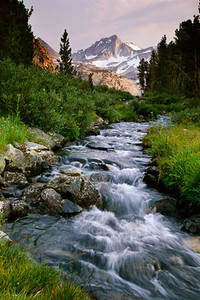 Galen had a passion for the outdoors that came first and gave him the appreciation for the outdoors. His fitness that came from his climbing and hiking allowed him to get further and take pictures of areas that photographers had not seen before.
Galen had a passion for the outdoors that came first and gave him the appreciation for the outdoors. His fitness that came from his climbing and hiking allowed him to get further and take pictures of areas that photographers had not seen before.
Live the landscape first, have a passion for that first and let it drive your photography. Keep fit and go that bit further. If you don’t get an image that you love, make sure you’ve loved just being out.
Galen used a 35mm camera when nearly all other photographers were using large format and maybe medium format (although the medium format photographers were called ‘lightweights’). His philosophy was to get out there and go further, carrying equipment that wouldn’t restrict his movements.
Use the lightest camera you can - go out with just a compact now and again - use it hand held or maybe with just a monopod.
Don’t fuss about resolution (that means you large format users). The picture is more important! 3x2 ratio can work in the right hands!
Galen was addicted to the dramatic light, looking for conditions where direct light and reflected or diffuse light combined. He would also look for storm fronts or edges of weather systems to get the breaking light.
Get out early, leave late, get out just before the end of a bad weather system.
Galen would take multiple compositions of any shot. As a stock photographer he wanted combinations that would offer the best options for a picture editor. In one of his articles he talked about taking a portrait shot, then a landscape (bracketing plus and minus half a stop) and then pulling out to give space for copy and repeating the process and then maybe trying a different wider crop for a different copy placement.
Take multiple versions of your great shots, shoot wider to include space for copy.
Galen learned photography from the age of 21 to 28 on a Kodak Instamatic and this didn’t stop him taking some astonishing landscape photographs.
Don’t be an equipment snob, make the most of what you have got and get out more.
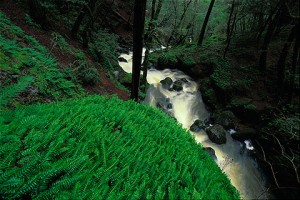 Galen repeatedly wrote about being true to the subject, not distorting the inherent truth of a picture (there were a lot of photographers using orange filters to create sunset colours at the time). He only used graduated filters and polarisers (and used the polariser less and less once Fuji Velvia came out). He let the film do the processing for him, creating stunning pictures with the smallest amount of equipment.
Galen repeatedly wrote about being true to the subject, not distorting the inherent truth of a picture (there were a lot of photographers using orange filters to create sunset colours at the time). He only used graduated filters and polarisers (and used the polariser less and less once Fuji Velvia came out). He let the film do the processing for him, creating stunning pictures with the smallest amount of equipment.
Buy a cheap 35mm camera and shoot some Fuji Velvia 50. You can easily sell it for the same as you bought it for later and you will definitely learn about colour from the way film renders scenes. Manually focusing and metering a scene will help your photography too (You can pick up an Olympus OMx and lens for £50 on ebay).
Read our book reviews:

